Art World
India’s First Public Sculpture Park Opens in a Spectacular 18th-Century Fort
Visitors must go on a treasure hunt to find the sculptures installed around the maze-like palace.
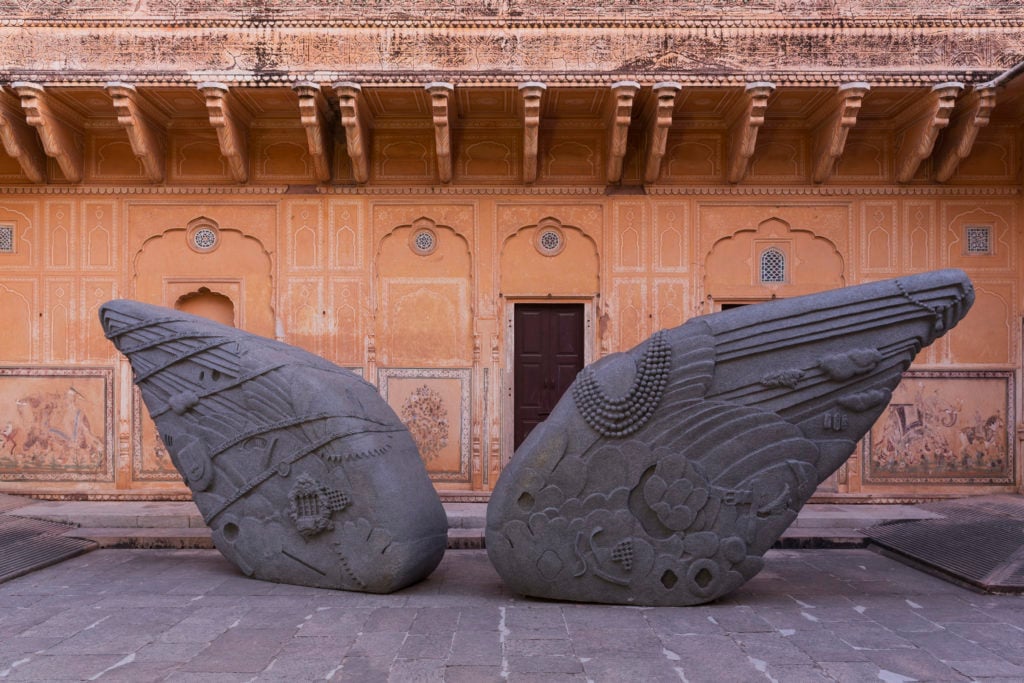
Visitors must go on a treasure hunt to find the sculptures installed around the maze-like palace.

Skye Arundhati Thomas

India’s first contemporary sculpture park opened to the public yesterday, December 10, in Jaipur, Rajasthan, where 55 sculptures by 24 artists have been installed inside an 18th-century fort high up in the hills surrounding the city.
At the heart of Nahargarh Fort—built in 1730 by the founding monarch of Jaipur, Maharaja Sawai Jai Singh—is the Madhavendra Palace, a set of apartments and suites constructed in the late 1800s. The Palace is highly symmetrical with its numerous rooms tied together by dense maze-like corridors, and works by artists including Anita Dube, Bharti Kher, Mrinalini Mukherjee, Benitha Perciyal, Subodh Gupta, and Gyan Panchal have been delicately installed inside its hand-painted quarters.
In addition to works by the South Asia-based artists on display are also several international names, including Huma Bhabha, Stephen Cox, James Brown, Hans Josephsen, and Evan Holloway, among others.
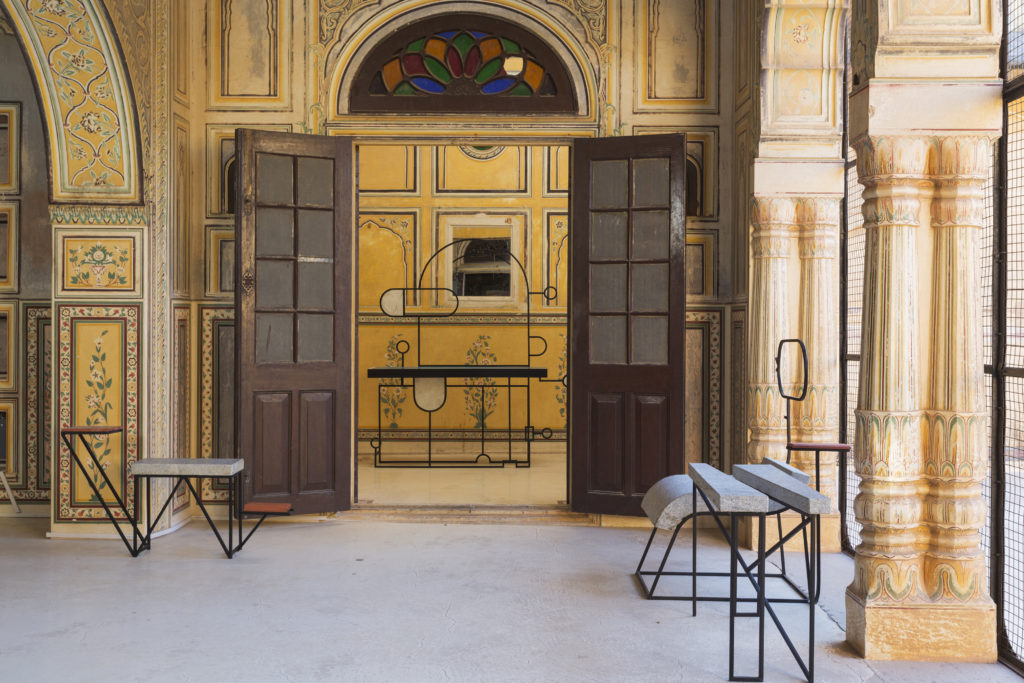
Installation view of Thukral & Tagra, Reliqua 3227 Furniture (2016). Photo courtesy of Dhruv Malhotra.
“Some of my favorite works are the smaller ones that are more intimate,” says curator Peter Nagy, who has been trying to realize this project for over 15 years. “I want it to feel like a treasure hunt, I have not mapped the space out, neither am I guiding people through a particular route. I hope people will just wander around and discover things, maybe even miss things and have to go back and find them.”
As for the impressive location, Nagy told artnet News that the majestic surroundings provide the perfect setting for contemporary artworks. “It was important to find something not too large and sprawling, where we would not have been able to maintain a focus. Madhavendra Palace is just so different in its architecture and modernist aesthetic—it provided us with the focus we needed.”
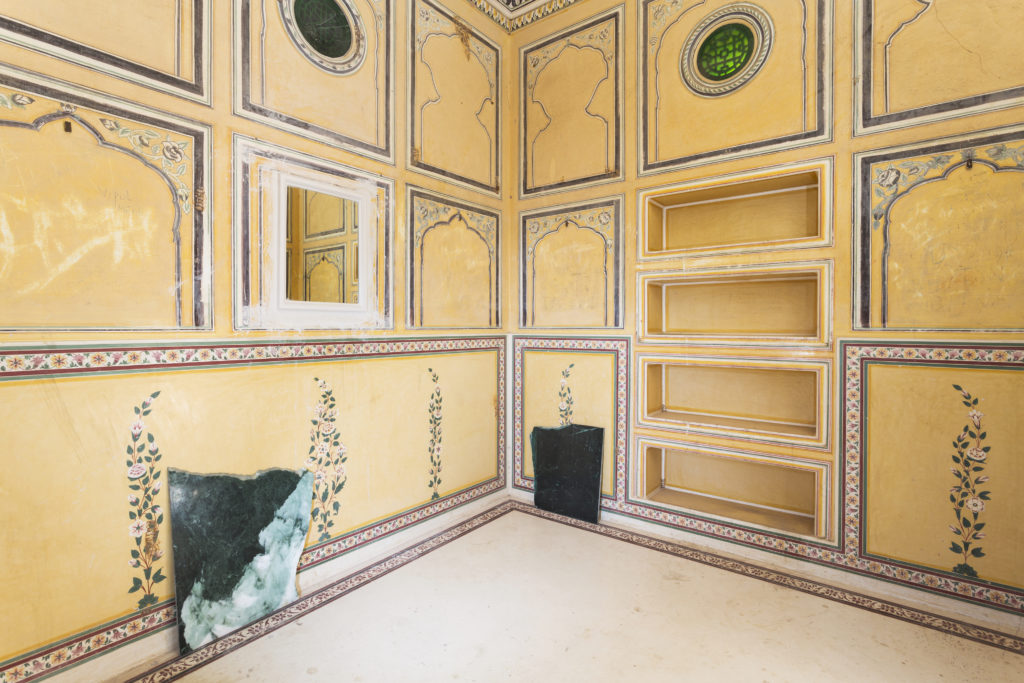
Installation view of Gyan Panchal, Pelorn 1 and Pelorn 2 (2012). Photo courtesy of Dhruv Malhotra.
Nagy and Aparajita Jain, who is the director of the Saath Saath Arts Foundation, have assembled a team not only of artists, but also patrons to gather capital for the sculpture park without using any state funds. However, the government has been crucial to the development of their plans.
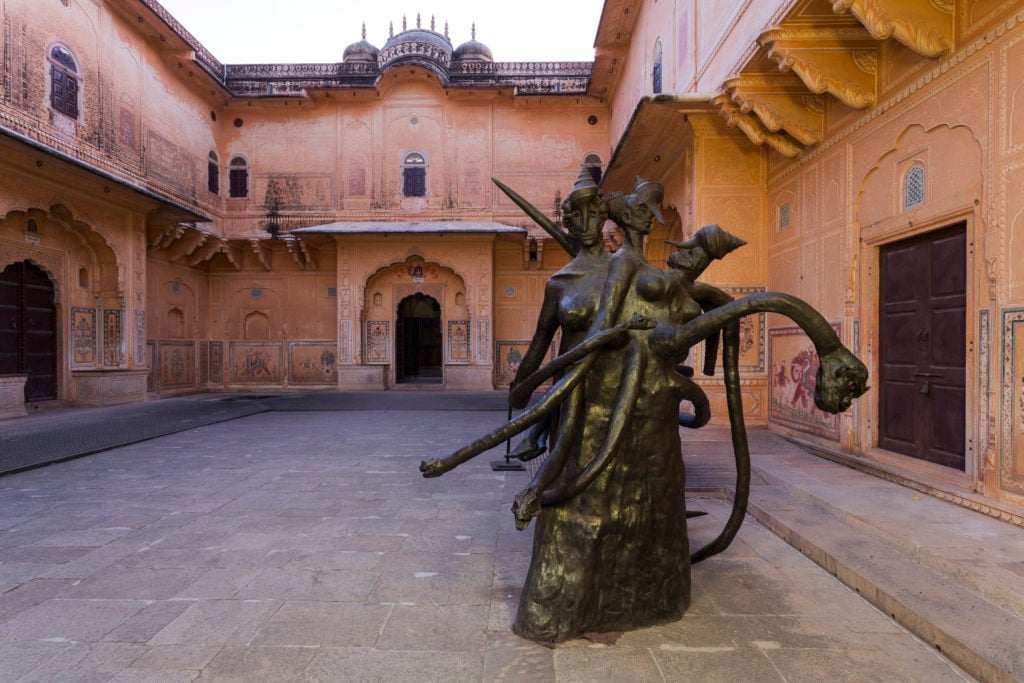
Installation view of Bharti Kher, choleric, phlegmatic, melancholy, sanguine, (2009-17). Photo courtesy of Dhruv Malhotra.
The Chief Minster of Rajasthan, Vasundhara Raje, is committed to promoting public art and the region’s cultural infrastructure. In the last couple of years, Rajasthan has seen over 30 new cultural projects, 12 of which are to reopen and refurbish museums, including the newly inaugurated Jawahar Kala Kendra, also in Jaipur.
“It is never easy to work with the government,” says Malvika Singh, writer and publisher-turned-cultural advisor for Raje, “but there is something different going on here.” Singh explains how it took only 24 hours for the team to receive the necessary permissions once they had selected the venue for the park. “The government’s role here has been to facilitate, and that is the template we are trying to create for the whole of Rajasthan,” she adds.
![Installation view, Subodh Gupta, 'Stove' (2013) [L] and Jitesh Kallat, 'Vertical Chronicle of a Turbulent Equilibrium' (2013) [R]. Photo Courtesy: Dhruv Malhotra.](https://news.artnet.com/app/news-upload/2017/12/C4A8693-1024x683.jpg)
Installation view of Subodh Gupta, Stove (2013) [L] and Jitesh Kallat, Vertical Chronicle of a Turbulent Equilibrium (2013). Photo courtesy of Dhruv Malhotra.
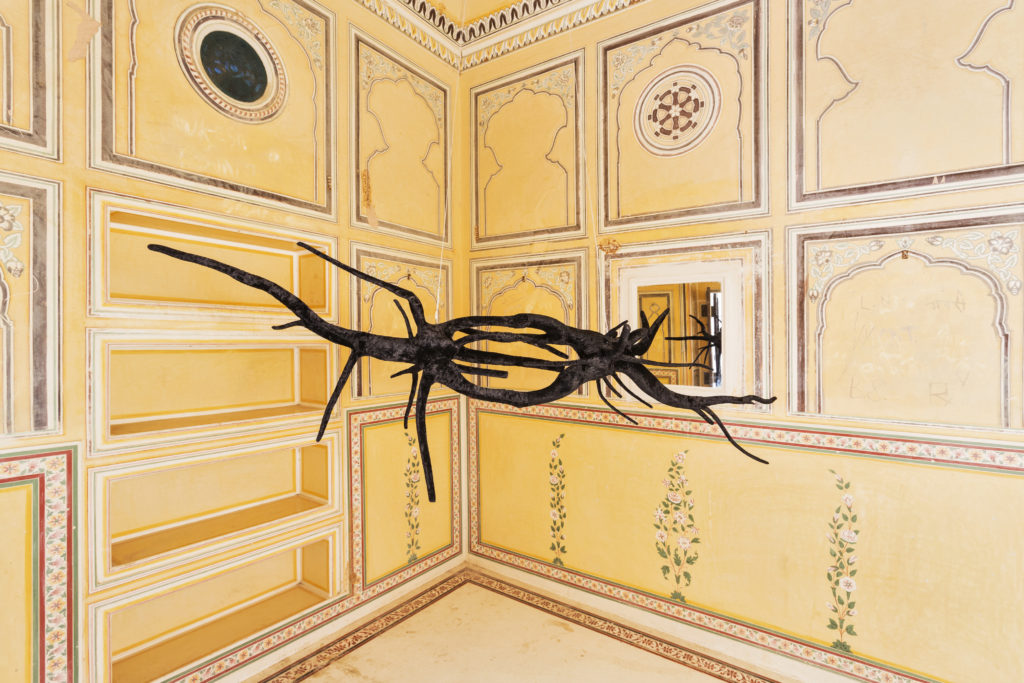
Installation view of Anita Dube, Void Coitus (2008). Photo courtesy of Dhruv Malhotra.
In a subcontinent where the complex negotiations required to enable public art oftentimes render efforts either as derivative or gentrifying, it takes a genuine collaborative effort between state and arts institutions to pull off a successful and functional space. The brochure for the Madhavendra Palace Sculpture Park reads: “Visit, Engage, Replicate.” Here’s hoping that many will take them up on the offer.